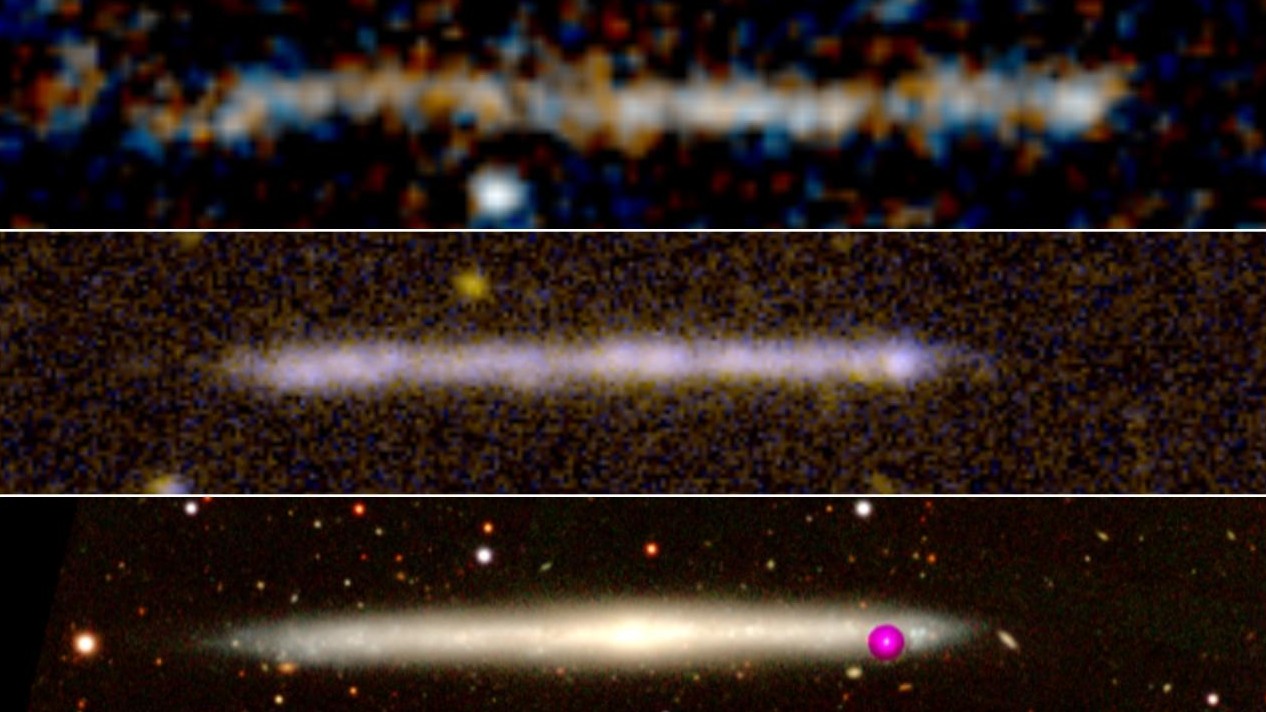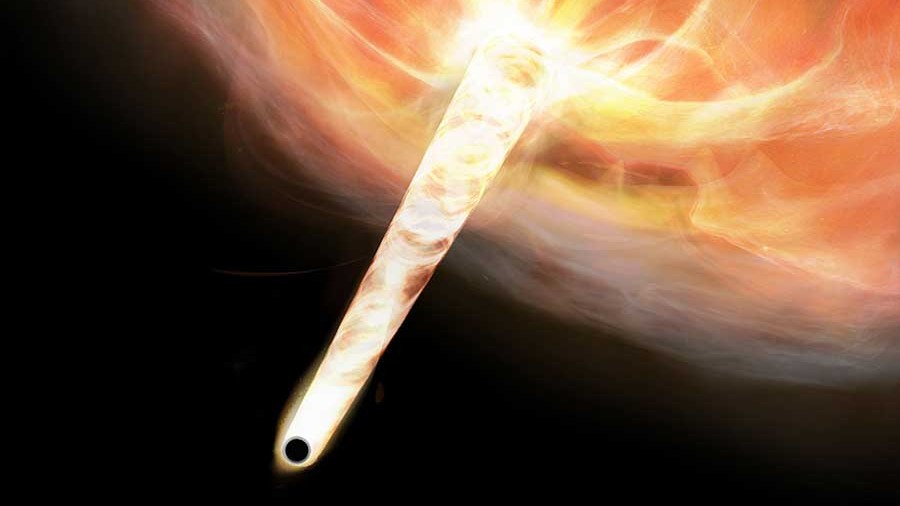
A mysterious streak of stars coursing through space like a vast, cosmic river has astronomers conflicted. Is it the result of a "renegade" black hole surging through space, or is it a bizarrely flat galaxy in disguise? New research makes the case for the latter – but the mystery is far from settled.
The cosmic streak was initially detected by NASA's Hubble Space Telescope and estimated to measure 200,000 light-years long, or about twice the diameter of the Milky Way. Last month, a study published in The Astrophysical Journal Letters posited that the streak might be the result of a runaway supermassive black hole plowing through a cloud of stellar gas and dust roughly 7.5 billion light-years from Earth.
The object's gravity and velocity, the study suggested, would have ignited the gas and left a blazing trail of stars in its wake. This exciting discovery would mark the first observation of a rogue supermassive black hole — objects that are theorized to roam the universe after being ejected from their host galaxy, possibly due to collisions with other black holes.
Now, new research hints at a more mundane explanation.
The new study, published in the journal Astronomy & Astrophysics, suggests that the weirdly thin streak might simply be a flat galaxy viewed on its edge, like the rim of a plate. Unlike the Milky Way, this supposed galaxy would not have a bulge of stars at its center but would be totally flat — a relatively common type of galaxy called a thin or flat galaxy.
To support their interpretation, the study authors compared the stars in question to a well-known flat galaxy called IC5249, located about 100 million light-years from Earth. They found that both the mass and velocity of the stars in the two objects lined up.
"They are extraordinarily similar," Mireia Montes, an astronomer at the Canary Islands Institute of Astrophysics (IAC) and co-author of the new study, said in a statement.
Even the study authors are somewhat disappointed with this finding.
"In one sense, it is also a pity," Jorge Sánchez Almeida, also an astronomer at IAC and lead author of the new study, said in the statement. Observing the first fleeing black hole would have been very exciting for the scientific community, he added.

Hope for the 'runaway' black hole
Pieter van Dokkum, a professor of physics and astronomy at Yale University and lead author of the initial runaway black hole paper, is not convinced by the new interpretation. In a response paper posted April 29 to the preprint server arXiv.org, van Dokkum noted several details in the streak observations that clash with the galaxy hypothesis.
For one, he wrote, observations of the steak in far-ultraviolet wavelengths show that the stellar stream is directly connected to a compact galaxy nearby; this supports the idea that the streak was created by a fast-moving object, such as a supermassive black hole, being ejected from the compact galaxy's center. If the streak was actually a flat galaxy, then there should be a clear heat signature where the two galaxies meet.
Observations also show a spectacularly bright "knot" of ionized gas right where the leading edge of the runaway black hole would be, van Dokkum wrote. This further supports the black hole theory, but is not accounted for in the edge-on galaxy theory.
The streak is also unusually large for a galaxy so far from Earth, the IAC team admitted in the statement.
"While there may be other explanations for the streak, we can pretty much rule out an edge-on galaxy," van Dokkum told Live Science in an email.
Whatever the explanation, this strange stellar river is a find that's well worth continuing to study. New Hubble observations of the streak coming this summer "should be definitive" when it comes to proving or disproving the galaxy hypothesis, van Dokkum said. He added that the mysterious streak was also selected for future observations with the powerful James Webb Space Telescope, which will look for direct evidence of black holes in the area.







